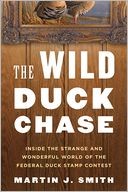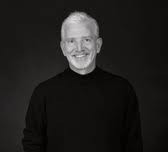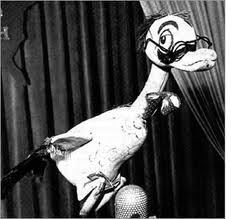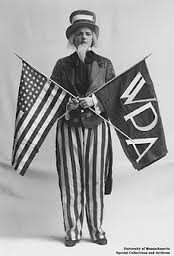
Martin J. “Marty” Smith is one of the nicest guys you will ever meet, an editor who has boostered smart writing and supported other writers, and also made a career himself as author of a popular mystery series and, because he is a gregarious and curious nut, a series of unlikely books which seem to have been produced for the happy simultaneous purpose of delighting you, the reader, and finding just the right holiday or birthday gift for the uncle or aunt or boss with whom you don't otherwise have much to talk about. Smith is editor-in-chief over at another magazine which has “Orange” in the name, and also a former senior editor at the benighted Los Angeles Times, where he led the doomed charge for quality, taste and local interest at its short-lived weekend magazine. His friends wondered what might become of ol' Marty with the layoffs and fool's-golden handshakes and other disappointments from the Old Gray Babe what with the Big Zell-Out, to pay the bills while he amused himself with writing another detective novel or something which might follow Oops: 20 Life Lessons from the Fiascoes that Shaped America and Poplorica. Well, here it is, another sociological joyride with laughs, politics and seemingly useless knowledge for readers who know how to make use of it.
]

Marty has done great work with the luxury lifestyle magazine–okay, it's Orange Coast–he steers through the no-doubt turbulent waters of slick ads for sexy cars, with sexy models and sexy real estate listings. Tough work, eh? Yet his website offering, “Will write for food,” suggests humor and perspective, and solidarity with what some editors, managers and the suits call “content providers,” i.e. writers. Over in the land of Benz and Bulgari, he's signed on terrific local writers to compose occasionally lovely short personal essays, meditations on life in our county, profiles and recollections, and not just about those areas of the OC where advertisers might imagine people read the mag.
Author of three crime novels (Shadow Image, Straw Men, Time Release) and, yes, those wonderfully bizarre collections (with co-content provider Patrick J. Kiger), Smith has won journalism awards galore, which maybe means he does what he wants–in this case, produce another odd, necessary, fun and smart book which, despite my otherwise excellent and discriminating taste, student papers to grade, a box of Santa Monice Review manuscript submissions to read, the deadline approaching on completion of my online traffic school requirement, not to mention my own terrific novel to work on, I picked up, begin reading and could not, as they say, put down. The Wild Duck Chase: Inside the Strange and Wonderful World of the Federal Duck Stamp Contest (It's just fun to say!) is a book with a gutsily obscure focus, exploring and teaching and offering its generous understanding of something you need to know, but maybe which you didn't know you needed to know.
[

There is a tradition of these short yet full-on obsession books, two favorites being John McPhee's Oranges and DJ Waldie's Holy Land about, respectively–go figure!–all things oranges and more than anybody imagined regarding Lakewood, California, that Levittown, PA-style experiment in tract housing in the Rio Hondo Valley.
Each is a cleverly disguised history book–in each case revisionist history. In Smith's book, this is a way to change the way you consider a revenue stamp or a duck or a duck painting stamp contest, not that maybe you had any real reason to consider them at all. Except you do. The project puts intrepid reporter Smith on the track of wildlife artists trying to bag the big prize in philatelic art, which is a big honor, and the chance to make a bunch of money selling your waterfowl paintings by way of what amounts to the advertising from an image which appears on every hunting permit in the nation. This duck revenue stamp, incorrectly if entertainingly portrayed in the movie Fargo, involves an audience of unlikely art and bird lovers: duck hunters, birders, environmentalist, pro and anti-big government types. Since 1934, during that era when “federal” and “government” were not bad words, this sweet tension has been happily complicated by the effort to “make hunters the primary stewards of the wildlife they hunted.”
Back in the day, when FDR was the prez and the Works Project Administration and its

many offshoot (not shooting) agencies built government buildings like post offices, and roads and dams and other infrastructure (much of it falling apart now), the big nasty feds established their authority over (or took responsibility for) the inter-state flyover of ducks and geese and brant, all of them migrating over and through and landing once in a while in refuges and preserves where some of 'em got shot. “Beauty, eh?,” as those two crazy McKenzie Brothers from Canada by way of SCTV used to say.
Smith's history lesson starts with a reintroduction to the biography of Mr. Big Bird himself,
John James Audubon, who “
set out from Cincinnati with his gun and a paint box on a journey down the Ohio and Mississippi rivers to paint life-size portraits of all the bird species he could…In those pre-photography days, and because his subjects so often were unwilling to pose, Audubon sometimes shot scores of birds to death for each painting, chose the most attractive specimens, then used wire to rig them into appealing poses.”
So we learn that the beginnings of conservation was a little compromised, even as it established our contemporary interest in birds as art, and as birds, and something like ecology: bag limits, seasonal hunting restrictions, habitat conservation, land management and those all-important preserves, funded in part by purchase of the stamps by hunters, collectors, conservationists.

All this and I haven't even gotten to the part about the art contest, founded by a Republican cartoonist, administered and judged by the government, and all to get just the right–and I mean perfect, anatomically accurate, and beautiful image on what amounts to the equivalent of that little decal on your license plate. None of this is controversial, not the way government participation in other art–think NEA-supported Andres Serrano, Karen Finley, Tim Miller–has been politicized, but it is still a big deal. Or should be. Smith meets the artists themselves, and offers the 2010 contest cycle as a case study, taking this opportunity as an expert by now to talk about the real issues of conservation and the “hunter-hugger schism,” and ending up with a visit to our very own Seal Beach National Wildlife Refuge in order to meditate on the place of cooperation and a shared vision by people with a different aim, as it were. Or maybe, finally, not so different.
Friends, there are so many ways into history and activism, consciousness-raising and politics. I'll say here, without giving anything away, that Smith concludes by gently arguing that the duck stamp phenom could be even bigger, and should be more celebrated. If literary lion
Jonathan Franzen can be a birder, so can you. And a steward, as much as are hunters. And for a lousy $15 you can buy a hunting stamp at
www.duckstamp.com, enjoy the beautiful artwork, and not even shoot anything at all! It's a modest way to participate in what Smith presents as one of the most successful government programs ever, supporting wetlands and the arts and, yes, the living legacy of a
New Deal initiative that I am guessing
Ryan and
Romney and
Ayn Rand would just hate! And that's enough for me!
The Wild Duck Chase: Inside the Strange and Wonderful World of the Federal Duck Stamp Contest, Martin J. Smith, Walker & Company, 272 pps., $25
Andrew Tonkovich hosts the Wednesday night literary arts program Bibliocracy Radio on KPFK 90.7 FM in Southern California.







